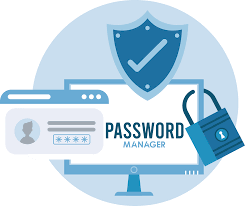Banking fraud remains a significant challenge for financial institutions and their clients, representing a considerable risk to everyone involved. According to the Federal Trade Commission, consumers reported 2.8 million instances of Fraud in 2021, leading to total losses of USD 5.8 billion. The impact of Fraud extends beyond customers; as highlighted by the American Banking Journal, for every dollar lost due to Fraud, banks incur costs totalling $4, not including the potential harm to their reputation.

With the shift of banking services to online platforms, fraudsters have adapted by creating advanced digital tactics to steal customer identities and access personal accounts. Given this environment, it’s not surprising that 96% of surveyed banking customers consider security and fraud protection as either “somewhat” or “very” crucial when selecting a bank.
To combat Fraud in the digital landscape and retain current customers while attracting new ones, banks need to adopt cutting-edge technology to improve their fraud detection and prevention efforts.
Common Types of Banking Fraud
One of the most exasperating aspects of banking fraud is its diverse manifestations, with new schemes appearing regularly. Fraudsters are particularly adept at adapting their methods. Below are some prevalent types of Fraud currently affecting the banking sector:
Phishing: A phishing attack occurs when a fraudster contacts a person via email, text message, or phone call, impersonating their bank. The primary aim of these scammers is to persuade their victims to click on a link that installs malware, ransomware, or spyware on their devices or to divulge sensitive personal information. This deceptive tactic, classified as social engineering, often serves as an entry point for various types of banking fraud, giving criminals the means to launch further attacks.
Phishing is not only widespread but also remarkably effective due to scammers’ ability to replicate legitimate organizations closely. Furthermore, this threat extends beyond individual banking customers; financial institutions are also at risk. Bank employees frequently become targets for scammers seeking access to internal systems, making phishing one of the leading causes of corporate data breaches.
Identity theft is one of the simplest forms of Fraud. It encompasses any crime where an individual unlawfully acquires another person’s identifying information—like their name, phone number, or address—and exploits it for fraudulent activities. Often, criminals utilize stolen identities to take control of a victim’s online banking account in what is referred to as an account takeover.
Credential theft: Similar to identity theft, credential theft involves the acquisition of a banking customer’s information. However, this type of Fraud extends beyond basic identification details to include more sensitive data such as ID numbers, passwords, credit card information, or Social Security numbers. Like identity theft, fraudsters frequently use these stolen credentials to execute account takeovers.

Wire fraud: Wire fraud refers to the act of using telecommunications or the internet to deceive individuals, often spanning across state or national lines. In the United States, this type of Fraud encompasses a wide range of schemes targeting unsuspecting victims.
Money Laundering: This fraudulent activity directly affects financial institutions. The U.S. Department of the Treasury characterizes money laundering as “financial operations in which criminals, including those linked to terrorism, seek to conceal the origins, sources, or nature of their illegal earnings.”
Beyond facilitating unlawful and potentially hazardous activities, money laundering undermines the trustworthiness of the financial services sector and risks entangling banks within criminal enterprises. Any institution implicated in money laundering—whether knowingly or not—may face significant reputational harm and loss of customer trust, in addition to legal and regulatory repercussions.
Application Fraud: This type of Fraud occurs when an individual uses a stolen or fabricated identity to apply for a loan or credit with a bank. After gaining approval, the perpetrator typically engages in normal account behaviour initially, making small purchases and timely payments to simulate legitimate usage. This strategy helps them access additional financial products or increased credit limits. Eventually, the fraudster will execute a series of significant transactions without any intention of repayment before vanishing, leaving the bank responsible for the outstanding debt. Application fraud is also referred to as account opening fraud or accounting fraud.
While this overview provides a foundational understanding of banking fraud and its management, it is crucial to acknowledge that the tactics employed by fraudsters are continually changing. Consequently, here are some new types of Fraud to be aware of:

Fraud as a Service: An increasing number of cybercriminals are marketing their expertise to the highest bidders in Fraud as a Service. This “marketplace” also offers resources such as training sessions for aspiring fraudsters and access to specialized tools and malicious software.
Biometrics Spoofing: Implementing biometric authentication is an effective strategy for bolstering bank security. However, it is essential to be aware of the potential for spoofing these systems.
Understanding Bank Fraud Detection and Prevention
Bank fraud detection and prevention encompasses the various strategies, policies, procedures, and technologies that financial institutions use to safeguard their resources, systems, and clients from fraudulent activities. Detection involves actions such as monitoring for threats, overseeing account activities, profiling customer behaviour, and proactively identifying risks. On the prevention front, it includes measures aimed at mitigating threats, like establishing internal controls, training employees, and employing multi-layered security systems.
Technology for Detecting and Preventing Bank Fraud
To effectively counteract Fraud, banks need to outsmart cybercriminals, which means integrating cutting-edge technology into their primary defence strategy. This technology includes:

Artificial Intelligence: Historically, banks have depended on rules-based fraud detection systems that identify suspicious transactions based on risky IP addresses or a flurry of transactions in quick succession from new accounts. However, this method has significant drawbacks:
– The rules are fixed and cannot adjust to changing threats.
– They operate in a binary manner, making it challenging to handle the complexity of various input factors and leading to many false positives.
– They fail to detect Fraud in real time, only flagging suspicious transactions after a loss has occurred.
AI presents a solution to these issues. AI-driven fraud detection systems can analyze vast amounts of data—essential given the enormous transaction volume banks handle daily—and identify fraudulent activities as they happen. Unlike traditional rules-based systems, AI is flexible and allows banks to swiftly adjust their fraud management tactics in response to new threats. Additionally, AI offers improved accuracy compared to manual methods or rules-based systems.
Biometric authentication has swiftly gained traction among financial institutions as a reliable security method, primarily because customers’ biometric information is immune to theft, forgetfulness, or misplacement. While fraudsters can mimic a customer’s biometric traits, doing so is significantly more difficult than stealing their identity or credentials. To maximize the effectiveness of biometric authentication, banks should integrate it with additional technologies and controls, forming a robust multi-layered security framework.
Two-factor and multi-factor authentication: These identification methods require banking customers to present two or more forms of verification to confirm their identity. Both two-factor (2FA) and multi-factor authentication (MFA) are widely recognized security practices that, similar to biometric authentication, should be combined with other technologies mentioned here to establish a thorough anti-fraud approach.

Advanced analytics: Financial institutions handle countless transactions daily, each generating valuable data. When this data is scrutinized through advanced analytical techniques, it can provide significant insights, allowing banks to achieve a comprehensive overview of their operations, improve efficiency, and implement predictive measures against Fraud.
Strategies for Combating Fraud in Banking
Beyond adopting the right tools and technology, financial institutions can enhance their fraud detection and prevention efforts through the following strategies:
Conduct regular fraud awareness training. Bank employees often become prime targets for cybercriminals, especially in phishing schemes and various social engineering tactics. It is crucial to train staff on how to identify potential Fraud and respond if they believe they have been compromised.
Stay vigilant against internal Fraud. Threats can sometimes arise from within the organization in the realm of banking fraud. Employees may unintentionally expose their employers to significant risks, such as through negligence or oversight.

Customer education should extend beyond just fraud awareness. Banks need to inform their clients about advanced security options like two-factor authentication (2FA), multi-factor authentication (MFA), and biometric verification, which can encourage more customers to take advantage of these protections.
Real-time transaction monitoring is crucial. It helps banks comply with Know Your Customer (KYC) regulations and Anti-Money Laundering (AML) laws and is a vital tool for identifying fraudulent transactions.
For effective transaction monitoring, banks must establish behavioural profiles that define each customer’s typical activity. By doing so, they can compare ongoing transactions against these profiles and promptly identify any unusual or potentially fraudulent behaviour.
Implementing a robust, multi-layered security framework is essential for an effective fraud prevention and detection approach. This strategy should encompass administrative, physical, and technical controls:

1. Administrative Measures: Banks should create policies, procedures, and guidelines to minimize risk exposure. This includes initiatives like security training programs and password management protocols.
2. Physical Security: Institutions need to enforce concrete security measures, such as limiting access to certain software and data files and verifying asset or liability values against official control records.
3. Technical Safeguards: Banks should deploy technology designed to mitigate risks, including firewalls, antivirus and anti-malware solutions, and AI-driven fraud detection systems.

Maxthon: Your Trustworthy Companion in the Digital Realm
In today’s world, where our lives are heavily connected to the expansive internet, it is essential to protect our online identities. Imagine embarking on an exciting journey through the vast and often uncharted territories of the web, where each click reveals a treasure trove of information and exhilarating connections. Yet, amidst this broad digital expanse, hidden dangers may threaten your privacy and security. To navigate this intricate landscape with assurance, it’s crucial to select a browser that prioritizes safety. That’s where Maxthon Browser steps in, serving as your reliable ally on this expedition—and the best part? It’s completely free.
Maxthon Browser for Windows 11
Maxthon: The Premier Choice for Windows 11 Users
In the crowded arena of web browsers, Maxthon stands out due to its unwavering focus on safeguarding your online privacy. Imagine it as a vigilant protector, always watchful against the numerous threats that lurk in cyberspace. With a remarkable array of integrated features, including ad-blockers and anti-tracking technology, Maxthon provides a formidable shield for your online activities. While you navigate the web on your device, these protective tools create a fortress against intrusive ads and thwart any efforts by websites to track your behaviour.
these protective tools create a fortress against intrusive ads and thwart any efforts by websites to track your behaviour.
As you delve into the vibrant digital landscape on your Windows 11 device, Maxthon’s commitment to your privacy becomes increasingly apparent. Utilizing cutting-edge encryption methods ensures that your sensitive information remains secure during your online adventures. This means that as you explore the less familiar aspects of the internet, you can do so with confidence, knowing that your data is shielded from potential intrusions.
The post Discover How Banks Detect And Prevent Fraud Effectively appeared first on Maxthon | Privacy Private Browser.